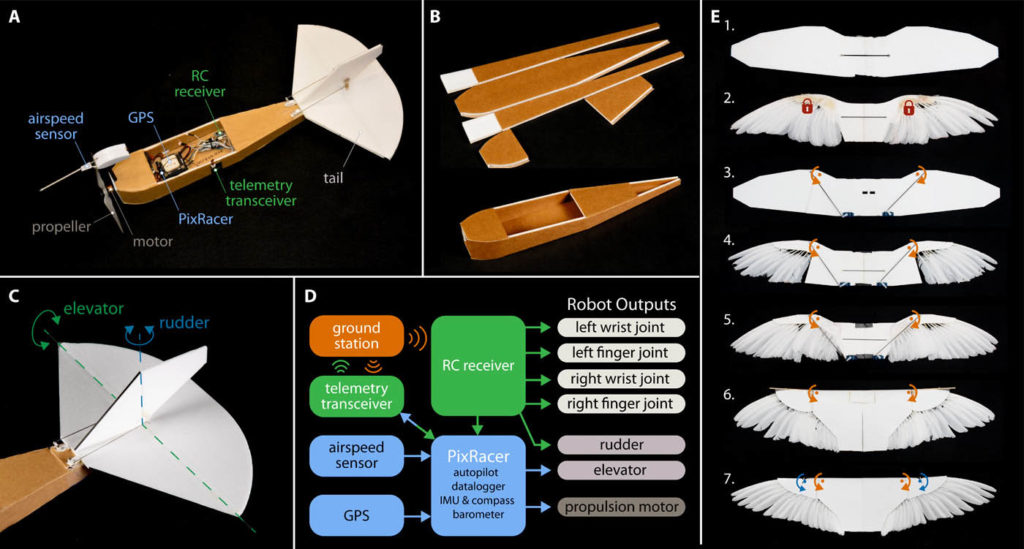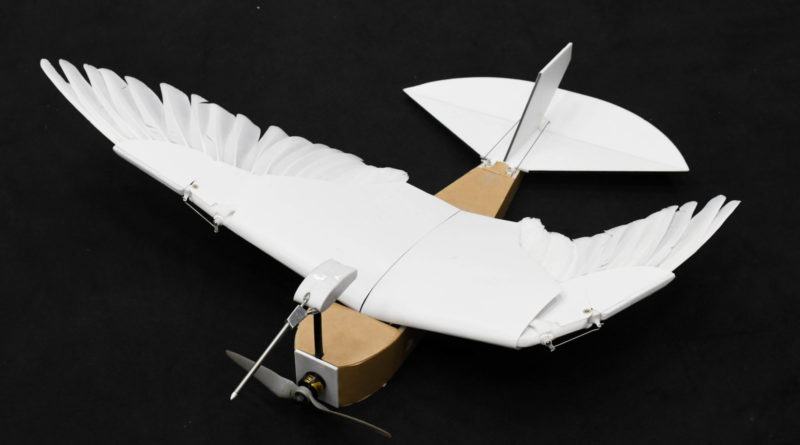PigeonBot Robot Flies Like a Bird
It’s a bird. It’s a plane. No, it’s a robot.
Meet PigeonBot. It was created by a team from Stanford University and it’s a winged robot that can replicate a bird’s flight better than any other previously. The researchers recently described the robot in a paper published in Science Robotics.
Just like a real bird, PigreonBot can change the shape of its wings to help swoop up and down and make turns. The flying robot features 40 elastically connected pigeon feathers. They are controlled via four servo-actuated wrist and finger joints. When the wrist and finger move, all the feathers move too.
“Inspired by how gliding pigeons morph their wing planform in flight, we developed a novel biohybrid morphing wing with 40 underactuated flight feathers controlled by two wrists and two fingers under closed-loop control,” said the research paper.

PigeonBot Doesn’t Flap Its Wings
Researchers studied pigeon cadavers to figure out how birds actually control the movement of their feathers during flight. They also used a wind tunnel to see how the feather-and-rubber-band design worked under turbulent conditions.
PigeonBot doesn’t actually flap its wings as real birds do. The robot’s wings use very subtle wrist-and-finger as it seamlessly guides through the air.
“In flight tests, we found that both asymmetric wrist and finger motion can initiate turn maneuvers—evidence that birds may use their fingers to steer in flight,” said the paper.
The Pigeonbot includes an autopilot (PixRacer R14 with integrated inertial measurement unit), a GPS, radio transceivers, servo actuators that control the conventional tail, and a motor-driven propeller for propulsion. The conventional tail is made out of foam with carbon fiber strips along the leading edge.
Along with helping scientists understand how birds really fly, the PigeonBot could influence future drone designs. Softer designs could lead to more efficient drones used in surveillance and package delivery.
Additional Sources: NPR
Check out our articles on China using facial recognition to monitor toilet paper usage and robots packing t-shirts in Japan.

